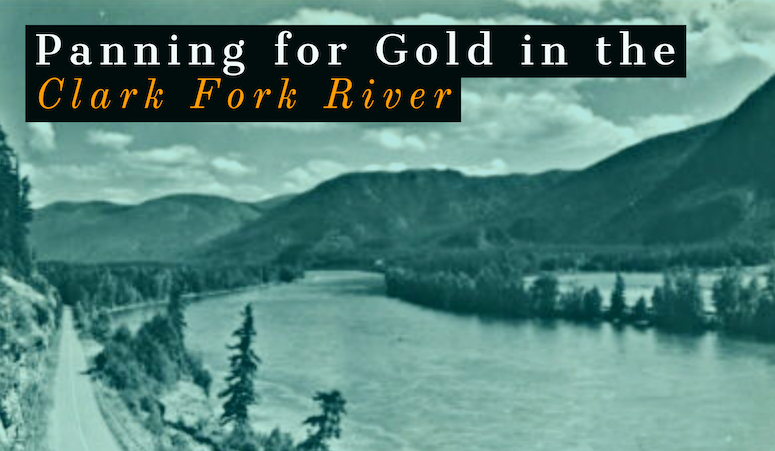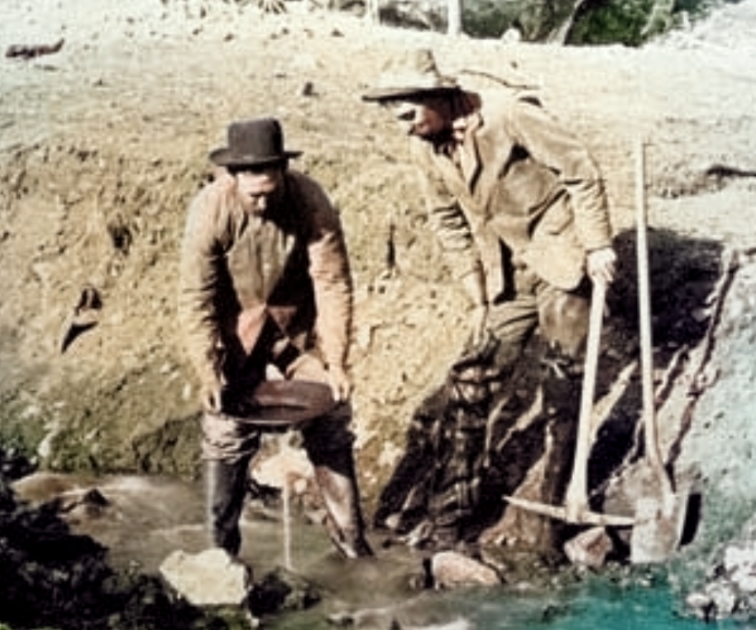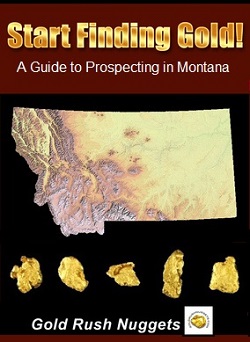
The Clark Fork River is the major drainage that flows across Western Montana. It runs along the Continental Divide with the headwaters near Butte, where it flows for 310 miles to drain into Lake Pend Oreille, just over the border in Idaho.
Mineral mining has always been big business in the Clark Fork watershed. Pollution from the large copper mines around Butte and Anaconda have degraded the river considerably, the unfortunate consequence of providing copper to the world. The Clark Fork watershed now encompasses the biggest Superfund site in the United States.
For gold prospectors, there are a lot of options for prospecting. Western Montana is very rich with a variety of minerals, and gold is one of them. Although the mining activity on the Clark Fork River itself was fairly limited historically, there is plenty of gold to find here. There were many rich gold camps that sprang up near the course of the Clark Fork River.
The Rich Tributaries
Gold was first discovered at Silver Bow Creek in early 1864. This creek flows just west of present-day Butte and drains into the headwaters of the Clark Fork. By the end of the year there was somewhere around 1000 men working the gravels. The placer gold played out rather quickly, and when the massive copper deposits were eventually found at Butte there was little interest in gold. This discover is now a footnote to the history of the Butte mines.
The aptly named Gold Creek drains into the Clark Fork River just east of Missoula. It is credited as the site of the first documented gold discovery in the state. A trapper found gold here in 1852, though not enough to attract any interest. Later in 1858, a party of men panned the gravels at Gold Creek and found enough to interest them. Yet, they didn’t return to the area until 1862. If you visit today you will see some expansive dredge tailings and clear evidence of mining activity.
Another rich mining site near the Clark Fork River was at the mining town of Garnet. This was primarily a hard rock mining district, but plenty of gold was found in the creeks and gulches here. Bear Creek was the major creek for placer mining, and it can be recovered from Garnet all the way down to the mouth. Extensive dredging has been done at the confluence of Bear Creek and the Clark Fork River.
Northwest of Missoula, Ninemile Creek drains into the Clark Fork. Take the road up Ninemile Creek for about 20 miles and you will start to notice old dredge tailings and other evidence of historic mining activity. This was a major gold deposit that is credited with around 100,000 ounces of gold. In recent years, there has been a lot of work done to restore the stream habitat on Ninemile Creek to improve trout habitat.
Another noteworthy gold source was at the mouths of Vermillion Creek and Trout Creek. Both of these now drain into Noxon Reservoir and much of the historic placer mining took place here. Much of the best gravel along the river is likely inundated by the reservoir now.
Panning Gold on the Clark Fork River
Note that with the exception of the area around Trout Creek, the main mining areas were not along the Clark Fork River itself. Rather most of the gold was mined from a variety of creeks that flow into the river.
Of course this gold has found its way into the main river, and there is gold throughout the entire course of the Clark Fork River. The richest concentrations of gold are hardly consistent. Using a gold pan on the gravel bars of the river can turn up a few shiny specks of gold pretty much anywhere.
The gold in the Clark Fork River for the most part is very fine. I have yet to hear of any nuggets being found in the river. Flood events can really move gold around, and areas that are very poor one year might be great for panning the next year. Years with high snowmelt can really change things along the course of the river.

Using Sluices and other Mining Equipment
In Montana, miners are required to file a ‘Notice of Intent’ to use larger mining equipment that would create a surface disturbance. Unfortunately this includes even small equipment like a simple sluice box. If you want to avoid this, you will need to limit yourself to just basic tools like a gold pan and digging tools.
If you find a rich deposit it may be worthwhile to do this, but for most casual prospectors it will probably be best to stick to the gold pan. If you find a rich spot, you can still find some very nice gold this way. Clean up bedrock with a trowel and classify the gravel down to 1/4″ before you pan it.
If you find a good spot you will be impressed with the amount of “colors” that you will find in the Clark Fork River.
Helena is Built on Gold | Montana Mining History
Miners are Finding Gold Nuggets in Montana… Big Ones!
Public Gold Panning Site at Libby Creek

